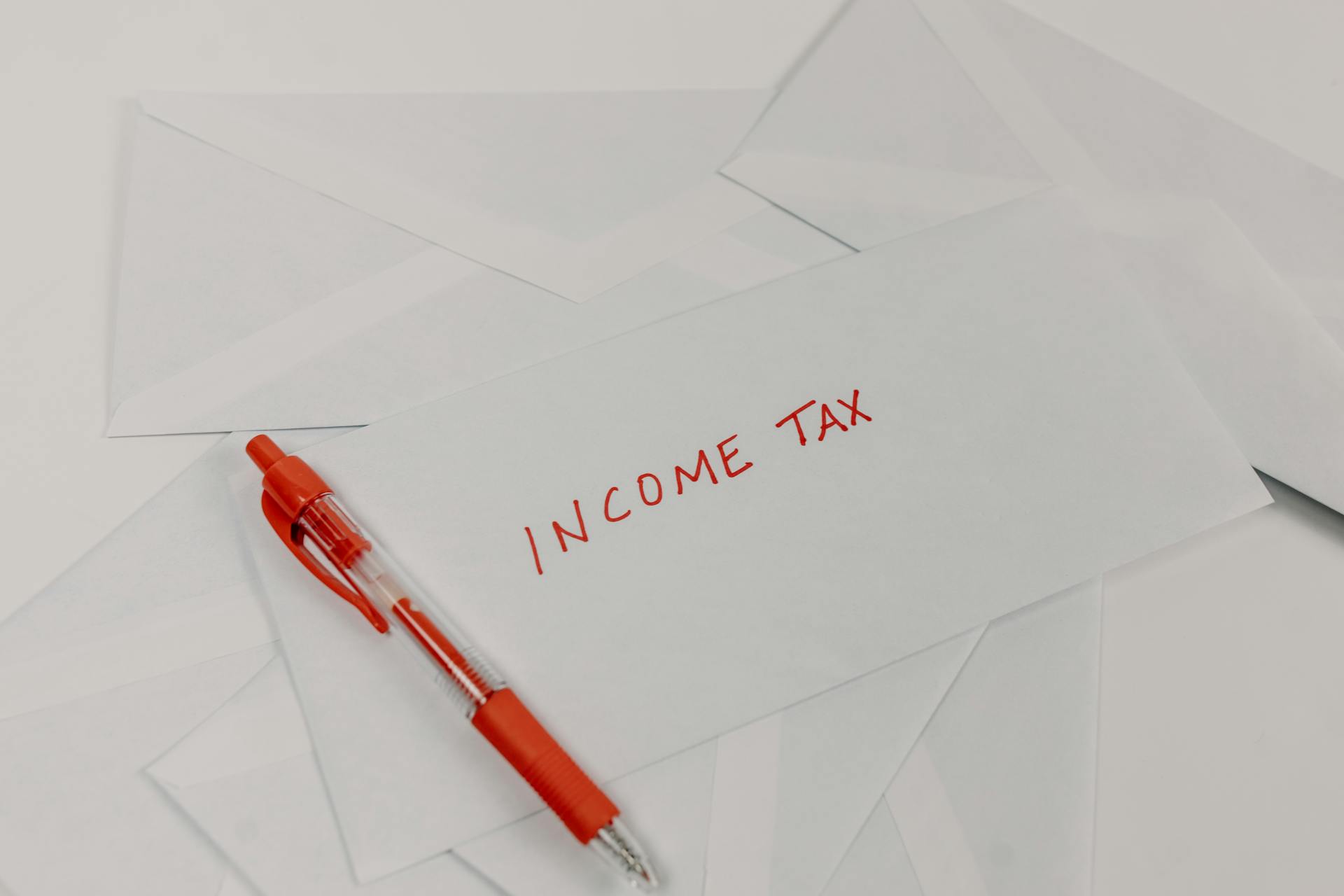
Internal Revenue Code Section 1031 Tax Deferral Strategies allow property owners to delay paying capital gains tax on the sale of investment properties. This can be a huge benefit for those who want to reinvest their gains into a new property.
To qualify for a 1031 exchange, you must be exchanging a property that has been held for investment or business use. This means your primary residence is not eligible for a 1031 exchange.
A unique perspective: Capital Gains Taxes on Inherited Property
What Is Section 1031
Section 1031 is a federal tax provision that allows a business or investment property owner to defer federal taxes on the gains from the sale of property if the proceeds are reinvested in other properties.
The provision is specifically designed for business owners or property investors who are selling one property and reinvesting the proceeds in one or more other properties.
It's not available to buyers or sellers of homes for personal use, so if you're looking to sell your primary residence, this provision won't help you.
Readers also liked: Raising Capital for Startup Companies
Qualifying like-kind exchanges are sometimes called Starker exchanges, which is a term you might hear in the real estate or tax planning world.
Section 1031 of the U.S. Tax Code is sometimes known as the Starker Loophole, but it's actually a legitimate tax provision that can save business owners and investors a lot of money in taxes.
Rules and Requirements
To qualify for a Section 1031 exchange, you must follow specific rules and requirements. The transaction must be structured as an exchange, rather than a sale and purchase, and a Qualified Intermediary (QI) must be involved.
The QI will hold the proceeds until they are used to buy the replacement property, ensuring that the transaction is considered an exchange, rather than a sale followed by a purchase. You must sign an exchange agreement, assignment of the purchase contract, and other documentation before the relinquished property sells.
Here are the key deadlines to keep in mind: you have 45 calendar days from the closing to identify up to three (and under certain circumstances four or more) like-kind replacement real estate properties, and the replacement must be acquired and the 1031 exchange completed by the earlier of 180 calendar days or the due date (with extensions) of your return.
Additional reading: How to Avoid Capital Gains Taxes on Sale of Home
Rules of Identification

The rules of identification for a 1031 exchange are straightforward. You have three options to identify replacement properties.
The Three Property Rule allows you to identify up to three properties without regard to their value. This is a great option if you have a specific property in mind.
Alternatively, you can use the 200% Rule, which allows you to identify any number of properties as long as their combined fair market value does not exceed 200% of the value of the property sold.
If you want to identify more than three properties, you can use the 95% Rule, which allows you to identify any number of properties without regard to their value, provided you acquire 95% of the fair market value of those properties.
Here's a summary of the rules:
Remember, these rules are in place to ensure a smooth and compliant 1031 exchange process. By following these guidelines, you can ensure a successful exchange and defer taxes on your capital gains.
Related-Party Rules

If the investor plans to sell their relinquished property to a related party and/or purchase their replacement property from a related party, special rules may apply.
Related parties include lineal ancestors and descendants, spouses, and siblings, as well as certain entities owned in part by the investor or a related party.
You'll need to let your exchange officer know if this applies to your intended transaction, and discuss any potential related-party issues with your tax advisor.
If this caught your attention, see: How Much Are Capital Gains Taxes on Property
Same Taxpayer Rule
To qualify for tax-deferral treatment, the same Taxpayer selling the relinquished property must purchase the replacement property.
An exception to this requirement is entities that are considered disregarded for tax purposes, such as single member limited liability companies and revocable trusts.
Sue Smith, for example, can sell a commercial building in her own name and acquire replacement property in her own name, allowing her to complete an exchange.
Sue Smith can also take title in the name of a limited liability company in which she is the sole member, or create a revocable trust and take title in the name of the trust, and still be considered the same Taxpayer.
This allows her to complete an exchange, even if the replacement property is held in a different entity.
Consider reading: Decennial Liability
Exchange Process

To structure a 1031 exchange, a Qualified Intermediary (QI) must be involved with the sale of the relinquished property and acquisition of the replacement property.
A Qualified Intermediary holds the proceeds until they are used to buy the replacement property, as long as the investor signs the necessary documentation before the relinquished property sells.
The investor must sign an exchange agreement, assignment of the purchase contract, and other documentation to ensure the transaction is considered an exchange, rather than a sale followed by a purchase.
The properties must be considered like-kind by the IRS, which means they must be held for productive use in a trade or business or for investment purposes.
To qualify for Section 1031 tax deferral, the investor must use the proceeds of the real estate sale for the new real estate investment within 180 days or the due date of the tax return.
The transaction must be structured as an exchange, rather than a sale and purchase, to qualify for the 1031 exchange.
Expand your knowledge: What Are Capital Gains Taxes on Real Estate
Tax Implications

To defer all tax, the replacement property must be equal or greater in value, equity, and debt than the relinquished property. This means the new property must have the same or greater amount of debt on it, or the debt can be replaced with cash.
In order to defer all tax completely, every penny of the net proceeds from the sale of the relinquished property must be reinvested in the replacement property. This is known as a "full tax deferral."
If you reinvest all of the proceeds in a replacement property, you can also replace the debt with cash, which is still considered a valid exchange.
Expand your knowledge: Merchant Cash Advance Attorney
Reporting and Timing
You have 45 days from the sale of your Relinquished Property to identify your potential Replacement Properties. This is a crucial deadline that must be met to ensure a valid exchange.
The Taxpayer has 180 days from the sale of the Relinquished Property to close on the purchase of the Replacement Property. This gives you plenty of time to find and secure a new property, but it's essential to stay on track.
Recommended read: Warrant Sale

If you want to identify multiple replacement properties, you have a few options. You can use the "Three Property" rule, which allows you to identify up to three properties without regard to their fair market value. Alternatively, you can use the "200%" rule, which permits you to identify any number of properties as long as their total fair market value does not exceed 200% of the value of the Relinquished Property.
Here are the key deadlines to keep in mind:
Remember, these deadlines are strict, and failure to meet them can result in significant consequences. Make sure to plan accordingly and seek professional help if needed.
Exchange Timing
You have 45 days from the sale of your relinquished property to identify potential replacement properties, and you can identify any property, subject to the rules of identification. This timeframe starts from the closing of the relinquished property.
You have 180 days from the sale of your relinquished property to close on the purchase of your replacement property. This deadline can be extended if you need to file for an extension on your tax return.
You might enjoy: Capital Gains Taxes on Primary Residence

For exchanges closing in the final quarter of the year, you'll need to get an extension to file your tax return to get the full 180 days to close the purchase transaction.
The Taxpayer has 45 days from the closing of the relinquished property to identify replacement property, and this identification must be made in writing and signed by the Taxpayer.
If you want to identify multiple replacement properties, you have two main options: the "Three Property" rule, where you can identify up to three properties without regard to their fair market value, or the "200%" rule, where you can identify any number of properties with a total fair market value not exceeding 200% of the value of the relinquished property.
Here are the rules for identifying multiple properties:
The replacement property must be acquired and the exchange completed by the earlier of 180 calendar days or the due date (with extensions) of your tax return.
Reporting an Exchange

Reporting an exchange requires some paperwork, but it's a crucial step in the process. You'll need to file Form 8824, Like-Kind Exchanges, which explains how to report the details of the 1031 exchange.
The gain recognized from boot is reported on Form 8949, Schedule D (Form 1040), or Form 4797, as applicable. This is important because it may have to be reported as ordinary income if depreciation must be recaptured.
Even though no gain or loss is recognized, the 1031 exchange must be reported on Form 8824. This form's instructions will guide you through the process.
A high level of complexity is involved in the 1031 exchange process, and mistakes can result in significant costs. This is why working with a 1031 exchange company can be beneficial, as they can ensure that your like-kind exchange fulfills the requirements of the tax code.
Here's an interesting read: Regulation Z of the Truth in Lending Act
Frequently Asked Questions
What disqualifies a property from being used in a 1031 exchange?
A property used for personal purposes, such as a primary residence, is not eligible for a 1031 exchange. Business or investment properties, like single-family rentals, may qualify for exchange.
What is not allowed in a 1031 exchange?
A 1031 exchange does not qualify for personal or intangible property, such as stocks, bonds, or collectibles. Additionally, property held primarily for sale, like a flip house, is also not eligible for a like-kind exchange.
What is the main goal of an IRC Section 1031 exchange?
The main goal of an IRC Section 1031 exchange is to defer capital gains tax on the sale of a property by reinvesting the proceeds into a new, like-kind property. This allows investors to keep more of their investment gains and potentially increase their wealth.
Sources
- https://krscpas.com/understanding-1031-exchanges/
- https://www.firstexchange.com/just-basics-tax-deferred-exchanges-under-irc-1031
- https://www.law.cornell.edu/uscode/text/26/1031
- https://www.investopedia.com/terms/s/section1031.asp
- https://www.taxnotes.com/federal-research-library/internal-revenue-code-1986/sec-1031-exchange-property-held-productive-use-or-investment/9603716
Featured Images: pexels.com

